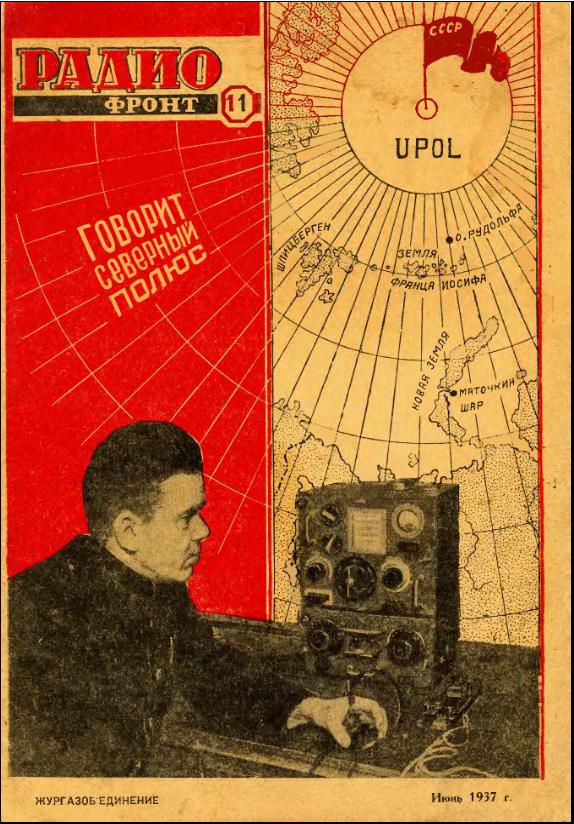Ernst Krenkel on:
[Wikipedia]
[Google]
[Amazon]
 Ernst Teodorovich Krenkel (russian: Эрнст Теодо́рович Кре́нкель; in
Ernst Teodorovich Krenkel (russian: Эрнст Теодо́рович Кре́нкель; in
Białystok
Białystok is the largest city in northeastern Poland and the capital of the Podlaskie Voivodeship. It is the tenth-largest city in Poland, second in terms of population density, and thirteenth in area.
Białystok is located in the Białystok Up ...
– 8 December 1971 in Moscow) was a Soviet Arctic explorer, radio operator, doctor of geographical sciences (1938), and Hero of the Soviet Union (1938). Amateur radio
Amateur radio, also known as ham radio, is the use of the radio frequency spectrum for purposes of non-commercial exchange of messages, wireless experimentation, self-training, private recreation, radiosport, contesting, and emergency communic ...
callsign
In broadcasting and radio communications, a call sign (also known as a call name or call letters—and historically as a call signal—or abbreviated as a call) is a unique identifier for a transmitter station. A call sign can be formally assigne ...
s: U3AA, UA3AA, RAEM.
Early life
Krenkel was born inBiałystok
Białystok is the largest city in northeastern Poland and the capital of the Podlaskie Voivodeship. It is the tenth-largest city in Poland, second in terms of population density, and thirteenth in area.
Białystok is located in the Białystok Up ...
, now Poland, to a German family.
Career
Ernst Krenkel was a radioman on polar stations * ''Matochkin Shar'' at Novaya Zemlya (1924–1925, 1927–1928), * ''Tikhaya Bay'' at Franz Josef Land (1929–1930), * ''Cape Olovyanniy'' at Severnaya Zemlya (1935–1936), and * ''Domashniy Island'' at Severnaya Zemlya (1936). He took part in Arctic expeditions on the '' Graf Zeppelin'' airship (1931), icebreaker '' Sibiryakov'', steamship (1933–1934, callsign RAEM). He was also a radioman on the first drifting ice station '' North Pole-1'' (1937-1938, callsign UPOL). He is known to have set a world record in January 1930 by establishing a long-distance, almost antipodal,radio communication
Radio is the technology of signaling and communicating using radio waves. Radio waves are electromagnetic waves of frequency between 30 hertz (Hz) and 300 gigahertz (GHz). They are generated by an electronic device called a transmit ...
between Franz Josef Land and Antarctica, between the most Northern and the most Southern polar sations of the world at that moment.
In 1938, Krenkel went on to work for Glavsevmorput
The Chief Directorate of the Northern Sea Route (russian: Главное Управление Северного Морского Пути , translit=Glavnoe upravlenie Severnogo morskogo puti), also known as Glavsevmorput or GUSMP (russian: ГУ� ...
. Later in his life he was employed in the radio industry. In 1951, he was hired by the scientific research institute of hydrometeorological instrument-making, becoming its director in 1969.
In 1968-1969 he participated in the 14th Soviet Antarctic Expedition as a head of cruise of the research vessel ''Professor Zubov'' to Antarctica to make rotation of the crews on the Soviet polar stations ''Mirny'' and ''Bellingshausen''.
Ernst Krenkel was deputy of Supreme Soviet of the Soviet Union
The Supreme Soviet of the Union of Soviet Socialist Republics ( rus, Верховный Совет Союза Советских Социалистических Республик, r=Verkhovnyy Sovet Soyuza Sovetskikh Sotsialisticheskikh Respubl ...
(1937—1946), chairman of Radio Sport Federation of the Soviet Union, chairman of Philately Society of the Soviet Union.
Biography
He wrote a book of memoirs entitled ''My Callsign is RAEM'' (russian: RAEM - мои позывные).Death
Krenkel died in 1971 and was interred at theNovodevichy Cemetery
Novodevichy Cemetery ( rus, Новоде́вичье кла́дбище, Novodevichye kladbishche) is a cemetery in Moscow. It lies next to the southern wall of the 16th-century Novodevichy Convent, which is the city's third most popular tourist ...
.
Awards and honours
* Ernst Krenkel was awarded two Orders of Lenin, three other orders and several medals. * Krenkel Bay in Severnaya Zemlya is named after him in 1973. *Ernst Krenkel Observatory
Ernst Krenkel Observatory (russian: Обсерватория имени Эрнста Кренкеля), also known as Kheysa, was a former Soviet rocket launching site located on Heiss Island, Franz Josef Land. It is named after a famous Arctic ex ...
located on Heiss Island
Hayes Island, also known as Heiss Island (russian: Остров Хейса, translit=Ostrov Kheysa) is an island in Franz Josef Land, Russia.
It is located in the central area of the archipelago, north of Hall Island, between Champ Island and Wil ...
, Franz Josef Land is named after him.
* A street in Moscow bears Krenkel's name.
* The research ship
A research vessel (RV or R/V) is a ship or boat designed, modified, or equipped to carry out research at sea. Research vessels carry out a number of roles. Some of these roles can be combined into a single vessel but others require a dedicated ...
'' Ernst Krenkel'' was named for Krenkel.
Popular culture
* Mikhail Veller in his 1994 collection of novels 'Legendy Nevskogo Prospecta' wrote about him highly fictional, fake story, which describes what never took place in a real life.See also
* Awards of the Soviet UnionReferences
External links
1903 births 1971 deaths 20th-century Russian people Russian explorers Russian and Soviet polar explorers Explorers of the Arctic Russian radio personalities Radio in the Soviet Union Russian philatelists Heroes of the Soviet Union Baltic-German people Russian people of German descent People from Białystok Burials at Novodevichy Cemetery Soviet people of German descent Amateur radio people {{hero-USSR-stub